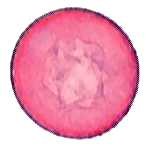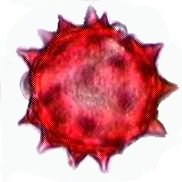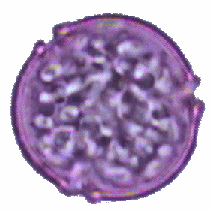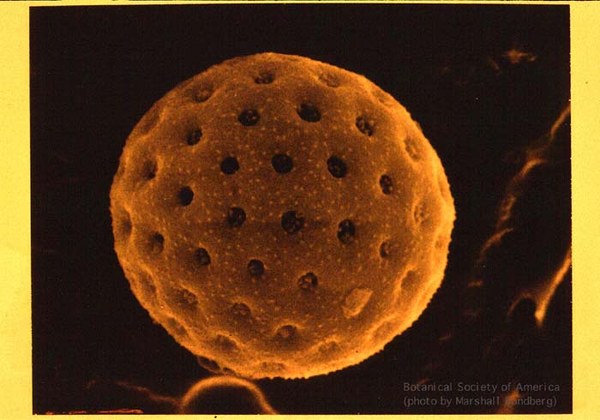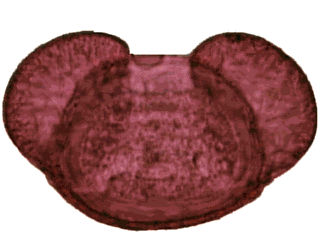Pollen Identification Images
What does pollen look like under a microscope?
Below you will find images of pollen common in Albuquerque and a short description of that pollen as they appear through the season.
Notes:
- Not all pollen have yet to be cataloged and pollen on the count may not have an image and therefore will not be displayed here.
- Pollen color is artificial.
|
Pollen Image |
Description |
|---|---|
|
|
Juniper and cedar pollen. Part of the Cupressaceae family where the pollen of cypress, juniper and cedar are very similar. The pollen is round and smooth with an average size of 20-30 µm. The USDA Plants Database lists 7 Junipers and one cypress for New Mexico, this may not include imported plants. |
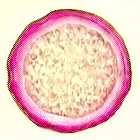 |
Elm Pollen in Bernalillo County is primarily from the Siberian Elm (Ulmus pumila). The pollen has a thick inner and outer skin (intine and exine) and typically has 5 pores. The surface has a brainlike (rugulate) texture making for easier identification. |
|
|
Aster Pollen. A large family of Asteraceae and Compositae (excluding Ambrosia and Artemisia) pollen with short spines. Relatively small at 18 to 25 µm. For more Information see the Desert Museum and the Botanical Dermatology Database. Ragweed is part of this family, yet since the pollen is distinguishable from other aster types we provide a seperate count just for ragweed. You can read more about the different types of ragweed: |
|
|
Rumex pollen. Rumex pollen is primarily from a plant commonly called sand dock or canaigre. The pollen is 20 to 30 µm with three or four narrow and long furrows and elongated pores. |
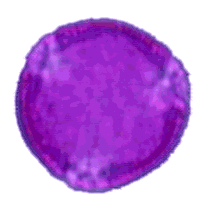 |
Sycamore or Planetree pollen. Plantanus pollen is similar to ash (Fraxinus) pollen in size and features. This pollen has three furrows and is 17-25 µm. |
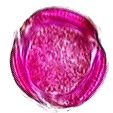 |
Willow pollen. Salix pollen contains unique features making it fairly easy to identify. It has three distinct furrows and averages 24 µm. |
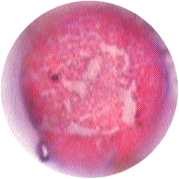 |
Cottonwood, Poplar and Aspen pollen. Populus pollen is round and smooth with visible cracking and flaking. Size averages 25 to 35 µm. |
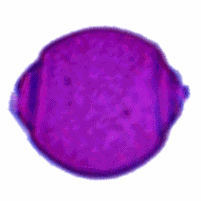 |
Mulberry pollen. Morus pollen in Albuquerque is primarily from the fruitless white mulberry tree. The pollen is small at 15 to 25 µm and is distinct with two protruding pores. The shape is likened to a lemon or football. |
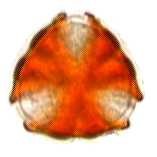 |
Phacelia pollen. Scorpion Weed (specifically Phacelia coerulea) pollen is very similar to Ash (Fraxinus) in size and form. Size averages 20 to 25 µm with three distinct furrows and surface texture. |
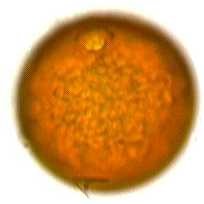 |
Grass pollen covers a large variety of plants. This pollen is typically large and round at 20 to 100 µm. The pollen has a single pore with a very smooth surface. |
|
|
Chenopod pollen. Chenopodiaceae (Goosefoot Family) pollens comes from over 30 genus of plants including Four Wing Saltbrush, Pigweed, and Russian Thistle. The shape of the pollen is similar to a golf ball and can have from 15 to over 100 pores over the pollen surface. Size averages 20 to 35 µm. For more information please see the following Chenopod Information page. |
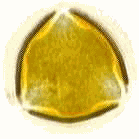 |
Fraxinus pollen. Ash pollen has from three to six furrows and is relatively small at 18 to 28 µm. |
|
|
Pinaceae pollen. Pine pollen is easily identified due to the air bladders, giving this pollen a Mickey Mouse cap appearance. Pine pollen are large at 45 to 85 µm. |
|
Sage Pollen. The Sage pollen category in Bernalillo County is predominately from sagebrush or Artemisia. Sage (salvia) and sagebrush (artemisia) have distinctly different pollen. |

